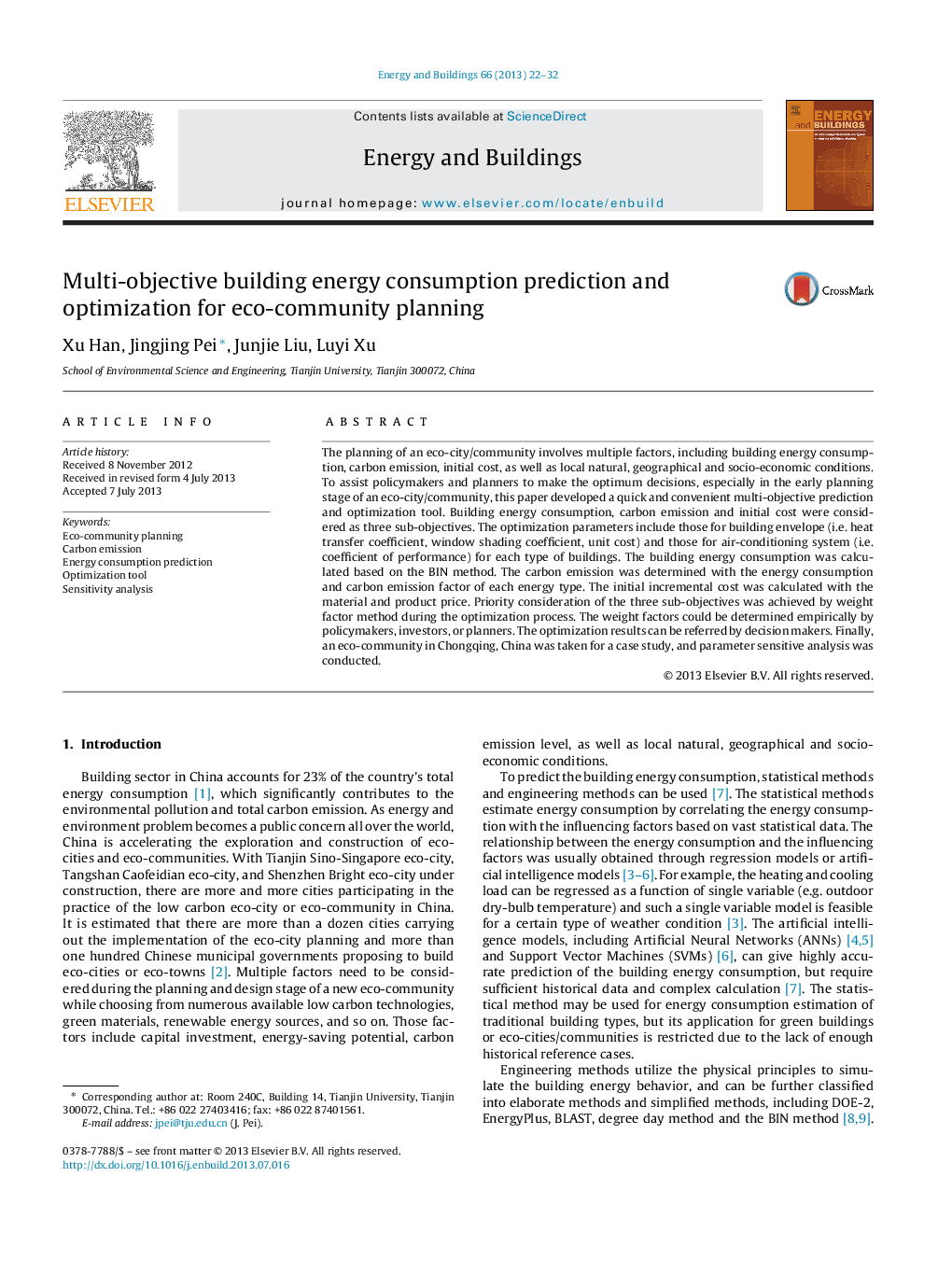| Article ID | Journal | Published Year | Pages | File Type |
|---|---|---|---|---|
| 6734258 | Energy and Buildings | 2013 | 11 Pages |
Abstract
The planning of an eco-city/community involves multiple factors, including building energy consumption, carbon emission, initial cost, as well as local natural, geographical and socio-economic conditions. To assist policymakers and planners to make the optimum decisions, especially in the early planning stage of an eco-city/community, this paper developed a quick and convenient multi-objective prediction and optimization tool. Building energy consumption, carbon emission and initial cost were considered as three sub-objectives. The optimization parameters include those for building envelope (i.e. heat transfer coefficient, window shading coefficient, unit cost) and those for air-conditioning system (i.e. coefficient of performance) for each type of buildings. The building energy consumption was calculated based on the BIN method. The carbon emission was determined with the energy consumption and carbon emission factor of each energy type. The initial incremental cost was calculated with the material and product price. Priority consideration of the three sub-objectives was achieved by weight factor method during the optimization process. The weight factors could be determined empirically by policymakers, investors, or planners. The optimization results can be referred by decision makers. Finally, an eco-community in Chongqing, China was taken for a case study, and parameter sensitive analysis was conducted.
Related Topics
Physical Sciences and Engineering
Energy
Renewable Energy, Sustainability and the Environment
Authors
Xu Han, Jingjing Pei, Junjie Liu, Luyi Xu,
